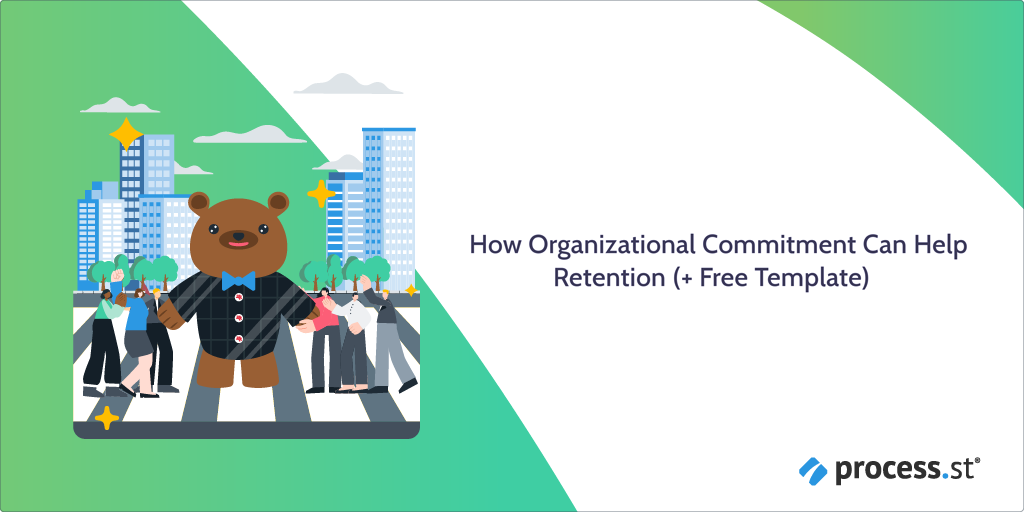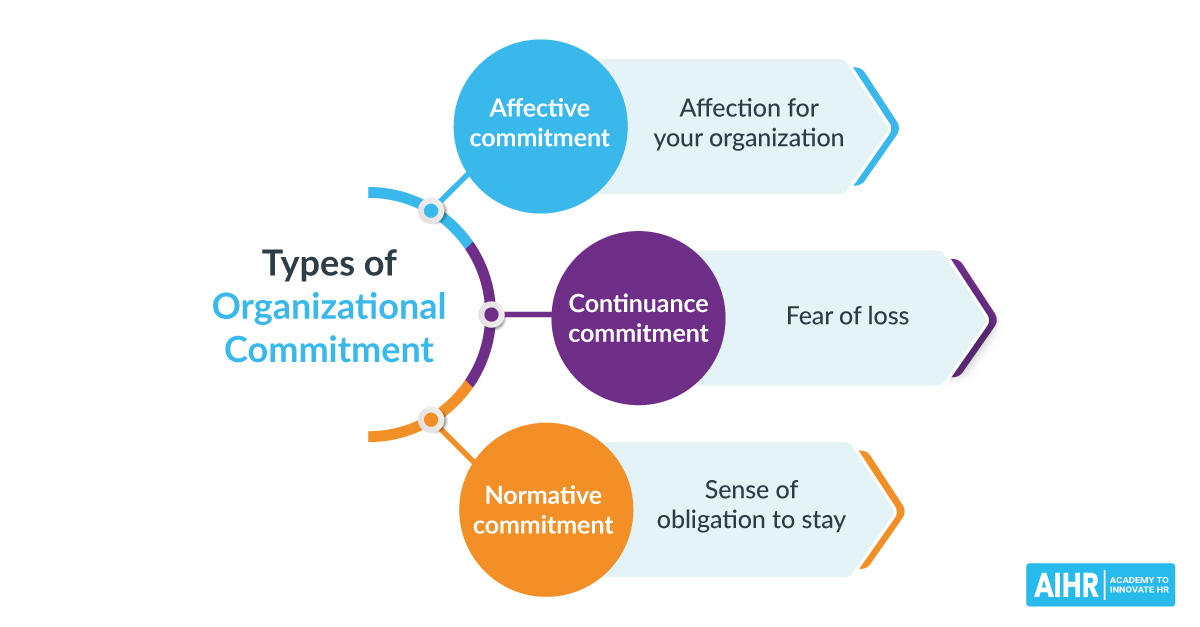
Employees leave their jobs to avoid burnout, make extra money, and secure career advancement. Those grounds sit on the foundations of the War for Talent and the Great Resignation.
Due to this construct, almost 64% of companies say employee retention is more problematic than recruiting. With the odds against you, how can employee churn be prevented?
Well, for starters, you can explore organizational commitment.
The theory of organizational commitment persuades employees to stay for the long term. It helps to avoid churn by making employees feel more valued. This informative post from Process Street will show you how that works.
The five organizational commitment topics you’ll learn about are:
- What is organizational commitment?
- How can organizational commitment help retention?
- Why HR managers should prioritize organizational commitment
- The three types of organizational commitment
- Organizational commitment and employee engagement
What is organizational commitment?
Organizational commitment is the study of why employees stay with a company. In particular, how do employees engage with an organization?
The idea of organizational commitment is measured using I/O psychology. Just between us, that’s industrial and organizational psychology.
How can organizational commitment help retention?
In short, it helps employees create a bond with organizations. And when they feel committed to your company, you generate loyal employees who are less likely to churn.
Organizational commitment is a relationship where the employee and the organization are equal partners. That’s the starting point of dealing with HR problems, like the Great Resignation:
Why HR managers should prioritize organizational commitment
Committed employees enjoy higher job satisfaction due to organizational commitment. A happy and satisfied employee is also more likely to take on added responsibilities. Moreover, you also get the benefits of increased employee:
- Development
- Engagement
- Well-being
In their landmark study titled Commitment in the Workplace, John P. Meyer and Natalie J. Allen describe a committed employee as one who:
“Stays with the organization through thick and thin, attends work regularly, puts in a full day (and maybe more), protects company assets, shares company goals, and so on.”
Another benefit of organizational commitment is reduced absenteeism. If you have to monitor absence with a daily checklist, you’ll accumulate a lot of paperwork. Why not try our online Leave of Absence workflow? You can try it with your free Process Street account.
The three types of organizational commitment

The three types of organizational commitment are:
Each works uniquely to ensure loyalty and commitment to an organization. They are all essential to retention.
“HR’s role is to attract, motivate, and retain their best people.”
– Deepak Lalwani, Deepak Lalwani & Associates, LLC
Let’s look at all three types of organizational commitment in more detail.
Affective commitment
Affective commitment is the employee’s emotional attachment to your company.
You can inspire substantial commitment with good communication. One way to do this is by encouraging employees to attend social activities. You could arrange outside-of-work sports days and help employees see themselves as part of your team.
It would also be beneficial if you discussed your employee’s future with them. This will make them feel valued and display your commitment to their career development. You can achieve this by providing training.
Continuance commitment
Continuance commitment is when employees remain with a company due to a fear of loss.
As a trait, it’s believed to be more prevalent in older employees. Their reasons for staying are:
- Fear of losing out on pay and benefits;
- The idea of losing valuable friendships;
- Thinking about past promotions.
To ensure continuance commitment, you should constantly review salaries. Focus on the wages of your best-performing employees. Retention bonuses are also a good incentive. If there are opportunities for employees to make extra money, they will be happier. Rival organizations do not quickly poach contented employees.
“The more long-term assurances you can provide about employment, the better.”
– Deepak Lalwani
Normative commitment
Normative commitment describes employees who feel obligated to stay.
It could be, for example, that their company had supported them during their problems. An EAP (Employee Assistance Program) is a great way to keep employees. The EAP helps employees with their issues while ensuring they continue in their roles.
Highly committed employees will have a strong work ethic. An unintended consequence of their high output is burnout. HR can show they take employee well-being seriously. You can do this by being on the lookout for stress and burnout.
Organizational commitment and employee engagement

Organizational commitment can retain a well-engaged workforce. However, you must be willing to invest time in practices that foster engagement.
To increase engagement, you can perform a job analysis. The process reexamines a position to see if HR can streamline it. You can also use Job rotation. Both strategies will improve job satisfaction.
“Employees who are engaged in their work and committed to their organizations give companies crucial competitive advantages.”
– Robert J. Vance, Ph.D., Employee Engagement and Commitment
Organizational commitment and diversity
The three types of organizational commitment can support diversity.
Here are three ideas to get you started:
- Affective commitment: Host events that celebrate diversity.
- Continuance commitment: Create friendships between colleagues from different backgrounds.
- Normative commitment: Ask employees to participate in anonymous diversity surveys.
Diversity in the workplace makes all employees feel recognized and valued. They also realize that their talents are appreciated. Diversity is of great importance to Process Street. We have an extensive gallery of ready-made workflows covering many diversity processes.
Organizational commitment and employee performance
With organizational commitment, employers may see the following increases in employee performance:
Another way to increase performance is to carry out employee reviews. There is some evidence that reviews may demotivate employees. Gallup stated that 14% of employees did not think reviews encourage improvement. However, a well-designed study can foster commitment. Due to this, 70% of companies are rethinking their performance strategies.
Workflow software is the best way to ensure a positive review experience. Workflows are a sequence of tasks to be followed through from start to finish. Workflow apps – like Process Street – are designed to make recurring tasks easier.
Organizational commitment and job satisfaction
Organizational commitment enhances job satisfaction. Also, your workforce will feel more confident in your organization if it shows a personal touch.
You may feel you don’t have time for organizational commitment with everything else you have to do. That’s where our workflows can help you. They free up human resources tasks, giving you the time to focus on the personal touch.
Getting started with Process Street is easy. With our remote work software, you can manage and track your team’s recurring processes.
And because Process Street is no-code software, there’s no need for lengthy training sessions. By saving you the work of more employees, you can focus on essential areas like organizational commitment.
“It’s no secret that increased job satisfaction will lead to increased organizational commitment.”
– Deepak Lalwani
Onboarding is one of Process Street’s most popular HR processes and is more productive with workflow management. You can find this out for yourself by trying our free demo!
What do you think about organizational commitment? We’d love to hear your opinions in the comments section below. Please let us know your thoughts about our free Process Street demo!







 Workflows
Workflows Projects
Projects Data Sets
Data Sets Forms
Forms Pages
Pages Automations
Automations Analytics
Analytics Apps
Apps Integrations
Integrations
 Property management
Property management
 Human resources
Human resources
 Customer management
Customer management
 Information technology
Information technology



Mark Jones
Mark Jones is a content writer at Process Street.